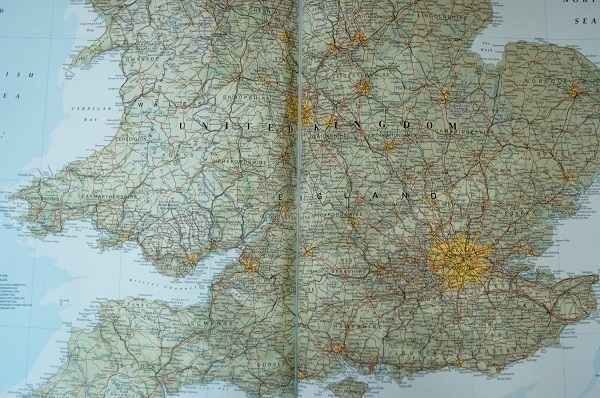Atlas

There can surely be little demand for paper atlases in this age of zoomable and seamlessly uncreased on-line maps. One of the kinds of fool I am is the kind who would buy a used copy of The Times Concise Atlas of the World (9th ed., 2004) at a charity shop. With a sharp depreciation from its original R.R.P. of £75, I paid £3 for mine, which turned out to be no special bargain, merely the going rate for a type of book that people are finding it difficult to give away. Having said that, a 14th edition of the same work was published as recently as 2020, so presumably there was some expectation that they still might find buyers.
(The same year that this edition was published, Google acquired Keyhole Inc., the original developers of what would become Google Earth.)
Relatively concise it may be, but it’s still a fairly hefty tome. For now I’m keeping it on this shelf, but that may need a re-think. The book falls into three sections: 70 pages of preliminary material (satellite imagery, geological & geographical information, etc.); 200 pages of maps; and a 142-page index. The index is a marvel in itself and a fine exemplar of a declining art: 7 columns per page of small type including a total of over 130,000 place-names. Both the small town where I live and the smaller one where I grew up can be found among them.
